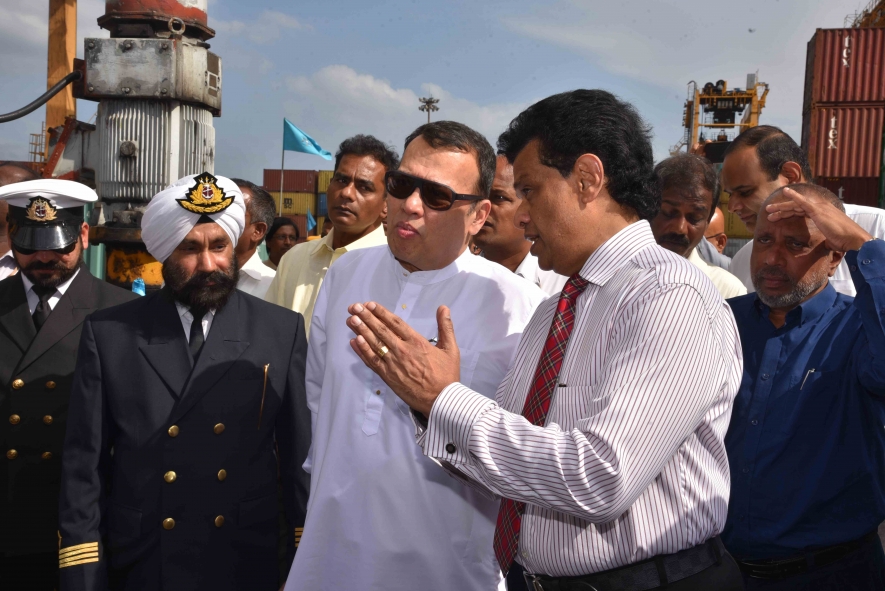The shipping consultancy Drewry that has launched a regular, bespoke index of port connectivity in this latest edition of its Ports & Terminals Insight report aims to show how well connected the world’s container Ports are. The index divides the world into seven major zones, and measures each port’s breadth of connectivity by the number of regions served and how many mainline services call per week. Routes that involve transshipment are not counted, nor are intra-regional services within a region.
“The Drewry Global Container Port Connectivity Index that signifies the importance of port connectivity as important as size or scale, consists of two variables, the number of mainline services calling at each port per week and the regions in the world to which each port is directly linked. Having the widest possible range of direct service is a significant competitive advantage for all ports,” it says.
At a recent meeting with all terminal operators and stakeholders of the Port of Colombo, held at the Ministry of Ports and Shipping, Hon.Minister Mahinda Samarasinghe said that the port exceeded the 6.1 million TEU target in collaboration with all terminals at the Port of Colombo and the port expects to reach the 7 million TEU target by the end this year. “ We will take the new initiative forward to promote the Port of Colombo internationally, together with all stake holders and to attract more new shipping lines that work in alliances to the port, “ he said.
Sri Lanka Ports Authority (SLPA) recently signed a Memorandum of Understanding (MOU) with the terminals of the Port of Colombo to operate collectively to promote the Port of Colombo. The meeting had been convened with the initiative of Hon. Minister of Ports and Shipping Mahinda Samarasinghe and with the participation of Dr.Parakrama Dissanayake, the Chairman of Sri Lanka Ports Authority (SLPA). Expressing views at the occasion the Chairman of SLPA Dr.Parakrama Dissanayake said that the terminals would compete with each other but would also co-operate with each other moving between competition and co-operation. “On the Asia to Europe sector there are 17 loops of which only 03 are calling Colombo. Therefore, obviously, we have got challenges to ensure that collectively we should attract more loops into the Port of Colombo. This means, we have to go beyond the partisan approach of promoting our terminals to protect the Port of Colombo,” the Chairman said.
The top management officials of the three terminals of the Port of Colombo that includes the state owned Jaya Container Terminal (JCT), and the two terminals that run under Public Private Partnership (PPP) the South Asia Gateway Terminal (SAGT) and the Colombo International Container Terminal (CICT) also attended the meeting.




















